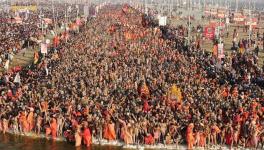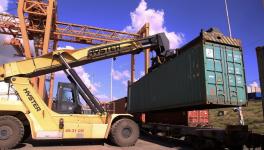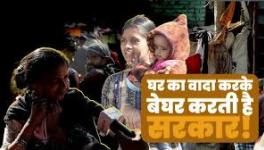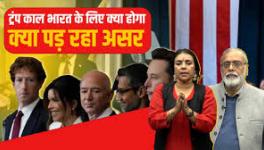Reality Behind Modi’s “Pilot Project”

Giving away awards to scientists, Prime Minister Modi on 28 February said that “one pilot project has just now been completed. Now the real thing has to be done, it was practice till now”. This rather mysterious statement came shortly after Pakistani Prime Minister Imran Khan declared that IAF pilot Abhinandan would be released. Many thought that Modi was referring to this development in some obscure way.
But that was not what he meant. He was saying: the air strikes on a ‘terrorist training camp’ in Pakistan on Feb 26 (and the subsequent air engagement on Feb 27) was a pilot project, a kind of testing the waters. The implication was that “the real thing” was in the offing. It could be – what? An invasion? Or carpet bombing? Or what?
But Modi is perhaps not really bothered about implications. Statements are for quick mass consumption, in an election season. Such a statement – he thought – would add to his strongman image, while being elliptical enough to pass as a mere play of words.
But there is more to this thinking than just image management vis a vis Pakistan or terrorism. Modi is making a virtue out of a necessity. There is a trail of either botched policies or outright damaging ones that has alienated people in Kashmir and strengthened the hand of those who want to divide the state or even push the separatist agenda. This is what is being hidden by the current chest thumping.
The Mess in Kashmir
There is enough data to conclusively prove that under the Modi tenure, Kashmir has tailspinned disastrously. Cross border violations of the cease fire agreement are up, both on the international border and the Line of Control, according to official figures quoted by the South Asia Terrorism Portal (SATP).
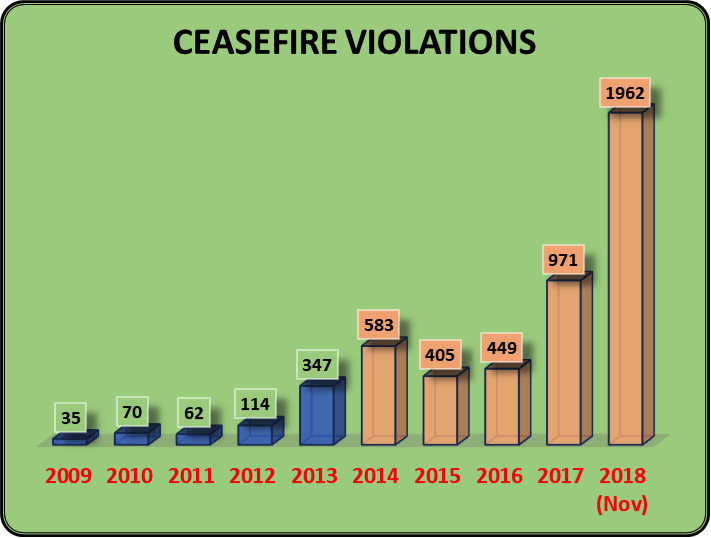
Number of people being killed have also inexorably risen after declining steadily in the preceding years, following the highs reached in early and mid-2000s, according to SATP which collected this data from media sources. This includes all: civilians, security personnel and terrorists. In just two months of the current year, 91 persons have been killed, including the 40 CRPF personnel killed in Pulwama attack on February 14.
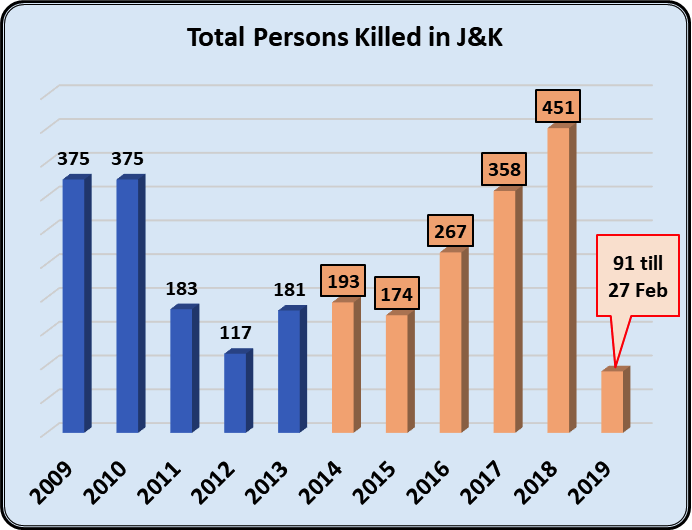
Hundreds have been injured in pellet firings and other clashes between local people and the security forces. Terrorist groups, both home grown and supported from across the border, are active and flourishing. Local people have been suffering from both sides unable to lead a peaceful life and go about their daily life.
Also read: The Kashmir Question: A ‘Made in India’ Problem
Opportunist Alliance for Power
The ruling BJP, led by Modi, cannot escape responsibility because it was sharing power with PDP during 2015 to 2018. This alliance between two parties that didn’t see eye to eye on all key issues was struck just to come to power. The preceding Assembly elections had been used to create a communal divide in the state and the three-year reign further aggravated this divide which coincided with regional division between Jammu and the Kashmir valley. This period was characterised by increasing communal polarisation, with poisonous propaganda being spread in Jammu by BJP and its allied organisations. A countervailing polarisation got strengthened in the Valley. The regime saw no real and effective economic measures to uplift the people or resolve issues of joblessness and agrarian distress in the state.
Policy Confusion
In the early days of his tenure, Modi struck a very conciliatory stance, meeting Pakistan PM Nawaz Sharif, even visiting him on his birthday. Then, after the Pathankot air base attack in January 2016, he took a u-turn. This was not out of just outrage at the incident in which 7 security personnel and one civilian was killed. It was the snapping back to default position, often followed by Modi’s predecessors, that armed crackdown is the way out. In the case of Modi, this position comes organically because it derives from his RSS ideology of dreaming of a Kashmir free of the local Muslim population. So, the Kashmir policy turned into an all out use of force to curb the populace. This inevitably has a dynamic of its own – each atrocity only fuels more protest – and the cycle continues. Meanwhile, Modi’s approach also spurred increasing intervention from the cross-border terrorist groups.
Diversionary Aim
Five years of this messing around in Kashmir needs to be seen in the context of five years of disastrous policies in the whole of India. Farmers’ unrest due to deep agrarian distress, raging unemployment, job losses, social strife due to communally divisive politics and throttling of democracy – all these and a thousand other failures including demonetisation and GST – have led to widespread unrest and discontent in the country. In such conditions, the Pulwama attack has been turned into a pilot project by the ruling party. It seeks to divert peoples’ attention from all the troubles, from all the failed promises and create a pseudo-nationalistic fervour.
Modi is hoping that this diversion will carry him (and his party) over the coming tough elections. Pseudo-nationalism fervour, fanned by a shamelessly craven media is the election plank of choice. It also carries the advantage of confusing the opposition parties most of whom are caught in a bind about what to say and do.
Will it last for another month and a half? It may not – that’s why the hints at more to come.
Also read: Jammu and Kashmir: Making Sense of Non-Sense
Get the latest reports & analysis with people's perspective on Protests, movements & deep analytical videos, discussions of the current affairs in your Telegram app. Subscribe to NewsClick's Telegram channel & get Real-Time updates on stories, as they get published on our website.









